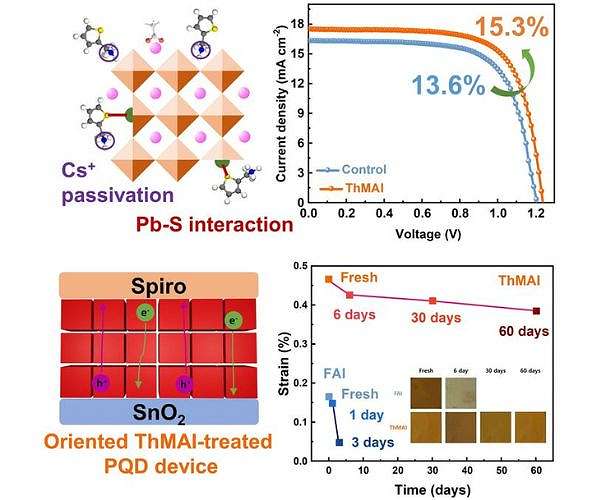DGIST improves the performance of quantum dot solar cells
A research team led by Professor Jongmin Choi from DGIST’s Department of Energy Science and Engineering, in collaboration with Professor Tae Kyung Lee from Gyeongsang National University and Professor Younghoon Kim from Kookmin University, has developed a new method that improves the performance and longevity of perovskite improves significantly. quantum dot solar cells. Their innovative approach addresses a key problem: surface deformations on quantum dots that hinder the efficiency of solar cells.
Perovskite quantum dots are widely considered essential for the next generation of solar cells due to their high light-to-electricity conversion efficiency and scalability. However, the process of replacing the “ligands” on their surface often causes deformations, similar to crumpled paper, that deteriorate the performance of solar cells.
The research team tackled this problem by introducing short ligands that tightly grip both sides of the quantum dots. This method effectively repairs the deformed surface of the quantum dot, which is similar to the process of flattening crumpled paper. By making the surface smoother, they significantly reduced defects and improved both the performance and stability of the solar cells. Energy conversion efficiency increased from 13.6% to 15.3%, and the cells maintained 83% of their performance over 15 days, marking a major advance in solar cell technology.
“Through this research, we can minimize surface defects on the quantum dots and stabilize their surfaces by reusing these amphiphilic ligands, significantly improving the efficiency and stability of the solar cells,” explains Professor Jongmin Choi. He also noted that the team plans to expand this approach to other photoelectric devices in the future.
This study, a joint effort of DGIST, Gyeongsang National University and Kookmin University, was supported by the National Research Council of Science and Technology, the DGIST R and D Program and the New Faculty Research Foundation of Gyeongsang National University. The findings were published in the ‘Chemical Engineering Journal’ on September 15, 2024.
Research report:Versatile anchoring ligands for uniform orientation and enhanced cubic phase stability of perovskite quantum dots


